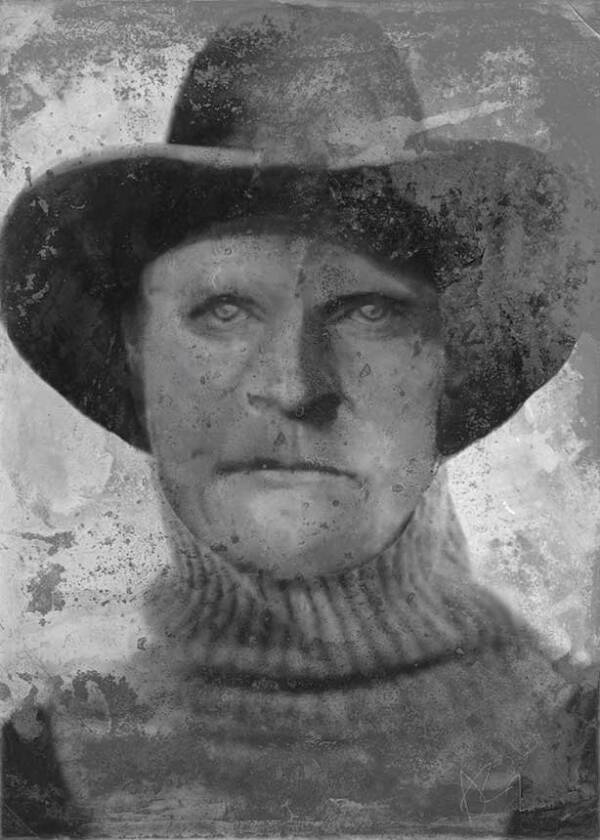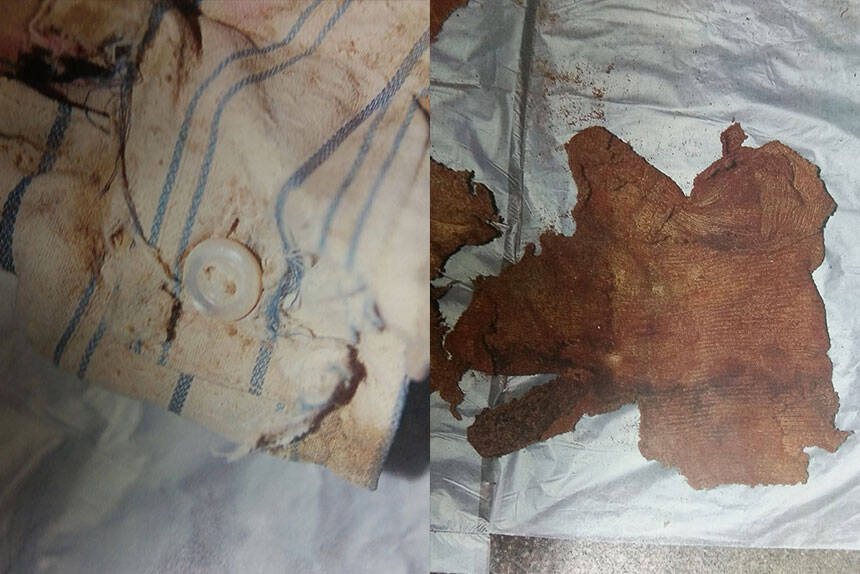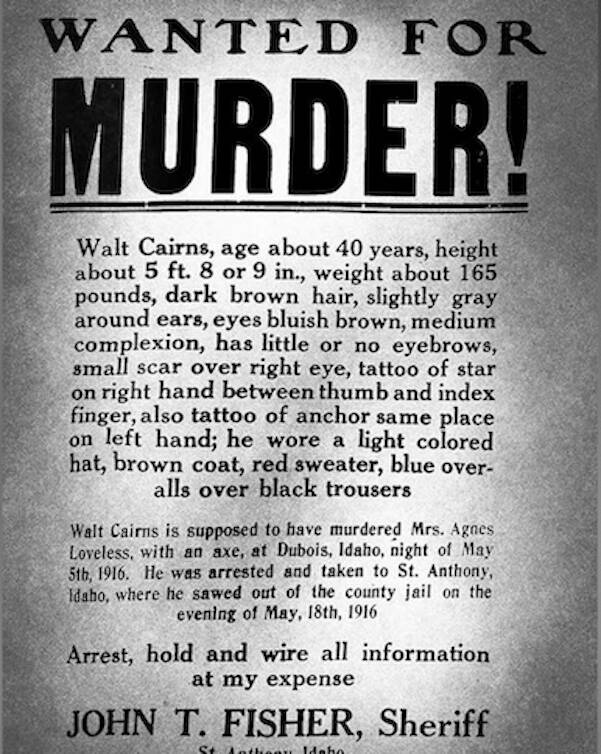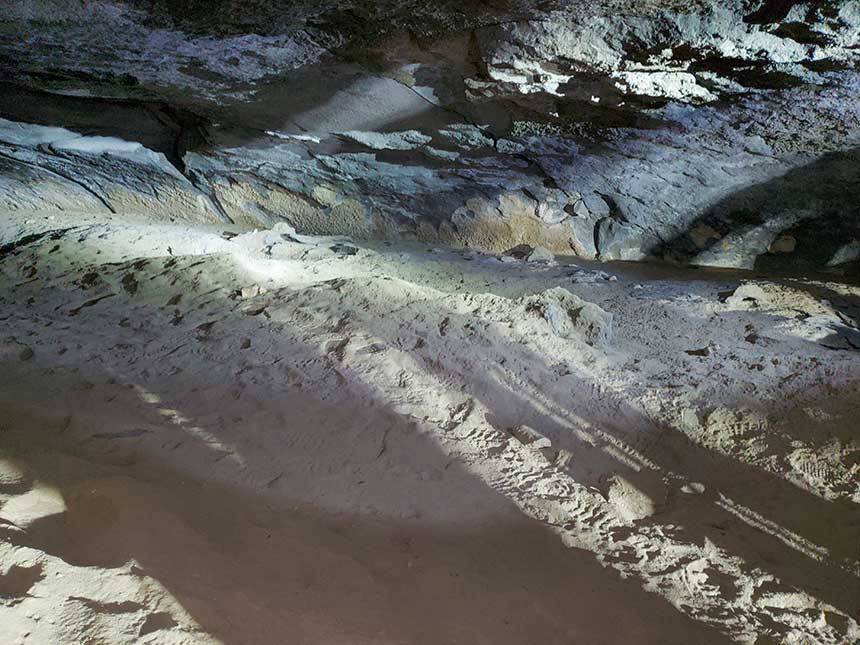When the headless body was found, experts estimated he died within the last decade. They were off by about half a century.

DNA Doe ProjectNo known photograph of Joseph Henry Loveless exists, but researchers created this composite using images of his closest relatives and written descriptions of him.
When the headless corpse of an unknown man was found in the Civil Defense Caves in Dubois, Idaho in 1979, nobody could’ve guessed that it would take 40 years to identify it, much less that it would belong to a notorious criminal.
According to Fox 8, however, investigators have finally put a name to the faceless corpse.
Across the decades, investigators from Idaho State University (ISU) and the Smithsonian, anthropologists, scientists, and even the FBI, have all tried to identify the body. At first, nobody even knew how long the body had been tucked away inside the caves.
The mystery was finally put to rest on the last day of the decade when Clark County Sheriff Bart Mary announced that the DNA Doe Project had determined the man’s genetic and genealogical data.
Mary announced that not only was the mystery man dead since 1916, but that he had a shocking criminal backstory that involved bootlegging, imprisonment, and even murder.

NamUs.GovThe clothing found on the headless corpse matched the description in the wanted poster for a Joseph Loveless who had murdered his wife.
“His name was Joseph Henry Loveless,” said DNA Doe Project team leader Anthony Redgrave. “Joseph Henry Loveless was born Dec. 3, 1870, in Payson, Utah Territory.”
According to People, the riveting tale of Joseph Loveless began on Aug. 26, 1979 when artifact hunters near the Montana border found a burlap sack filled with pieces of his torso.
His headless torso was wearing a white shirt with blue stripes underneath a red sweater. His arms and legs were missing, as well.
Since the remains still reeked and the skin was well preserved, coroner Ernest Still assumed that the man died in the last 10 years. Dr. Doug Ubelaker from the Smithsonian Institute, too, believed the corpse had died anywhere from six months to a decade ago.
“Already, at the beginning, no one could identify who this person was,” said ISU anthropology department assistant professor Samantha Blatt.
Loveless’s limbs were found 12 years later when an 11-year-old girl stumbled upon a severed hand in the same cave where his torso was found. An ISU excavation in that same location soon unearthed the man’s arms and legs.
The remains were safely stored at ISU until experts there decided in March 2019 to ask for the Doe Project’s assistance in identifying him.

DNA Doe ProjectThe wanted poster for Joseph Henry Loveless referred to one of his aliases, Walt Cairns.
There’s not a single photo of the man save for his wanted poster which was printed after he murdered his wife. Loveless did go by a different name at the time, however. His wanted sheet read “Walt Cairns.”
“Walt Cairns, age about 40 years, height about 5 ft. 8 or 9 in., weight about 165 pounds, dark brown hair, slightly gray around ears, eyes bluish brown, medium complexion, has little or no eyebrows, small scar over right eye, tattoo of star on right hand between thumb and index finger, also tattoo of anchor same place on left hand; he wore a light-colored hat, brown coat, red sweater, blue overalls over black trousers.”
Under Redgrave’s leadership, 14 volunteer genealogists spent over 2,000 hours researching the man’s family tree.
They found 31,730 people in the tree and narrowed these down to 250 “DNA cousins” — leading to his eventual identification.
Untangling the complex web of relatives was made all the more difficult due to the intermarriages and polygamy practiced by the Latter-day Saints of the time, but the DNA Doe Project finally pinpointed Loveless as the mystery man.

Mike Price/EastIdahoNews.comLoveless’s dismembered body was found in this part of Dubois, Idaho’s Civil Defense Caves in 1979.
Born to Latter-day Saint pioneers Joseph Jackson Loves and Sarah Jane Scriggins, Loveless married Harriet Jane Savage when he was 28 in 1899. Savage filed for divorce five years later, claiming desertion as well as failure to support their child.
Loveless remarried Agnes Octavia Caldwell a year later and fathered four more children. He was arrested for bootlegging in 1914 and again for the same charge a few months later.
The second time, however, he managed to escape from jail — by sawing the jail cell bars and stopping a train to flee.
His wife was found dead on May 5, 1916 inside the tent she, her eight-year-old son, and Loveless lived in outside of Dubois. He was immediately suspected.
“Sheriff John Spencer of Fremont County in Spencer, Ida., charged (him) with beating out his wife’s brains,” the Pocatello Chronicle wrote on May 12, 1916.
“Her death resulted after 50 hours of intense agony. It is charged that the ax was wielded by her common-law husband in Dubois at an early hour Saturday morning after she had returned home from a dance in that city.”
It was the eight-year-old who found his mother beaten to death with an ax. Another child of the couple was quoted at her funeral saying: “Papa never stayed in jail very long and he’ll soon be out.”
After yet another arrest, Loveless escaped again on May 23, 1916. He hid the saw he used in his shoes. That was the last time he was ever seen alive. Whoever murdered him remains unknown.
For Redgrave’s wife, forensic genealogist Lee Redgrave, this entire ordeal was one of the highlights of her career.
“This is one of the most exciting cases we have worked,” she said. According to Redgrave, this is now officially one of the oldest cases to ever be solved using DNA.
Next up, read about Carl Tanzler, the physician who lived with a corpse. Then, learn about Frank James, the brother of famous outlaw Jesse James who was nothing like his sibling.





